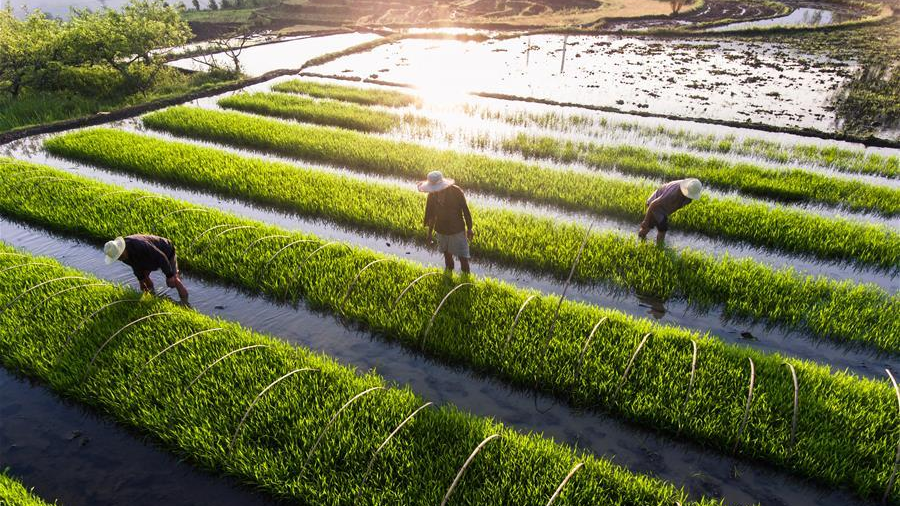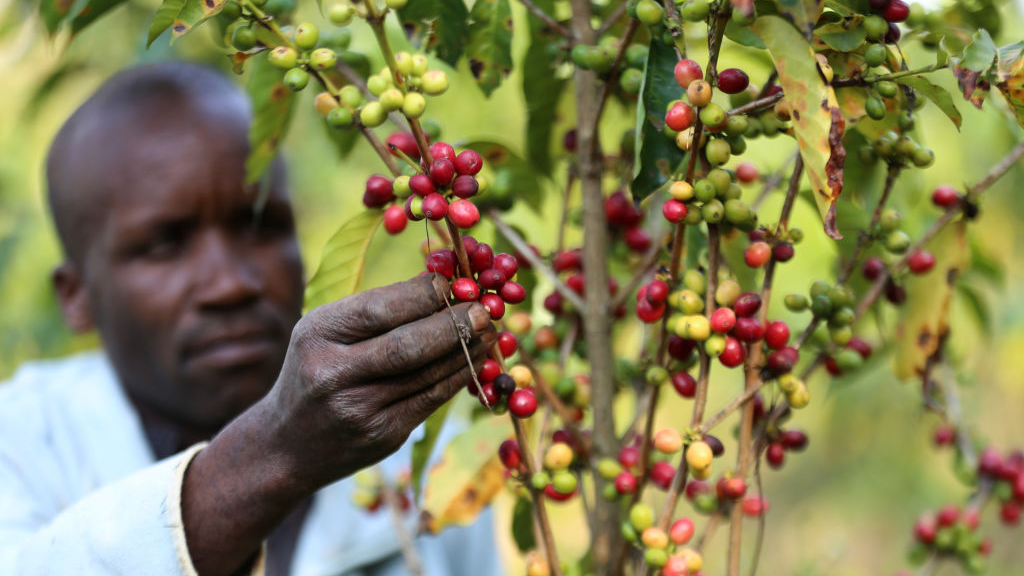Agricultural development in China: Are there lessons for Africa?

Farmers work in the fields in Jinxing Village of Dafang County, southwest China's Guizhou Province, May 21, 2018. /Xinhua
Since the 1978 economic reforms, the People’s Republic of China has demonstrated enhanced commitment to agriculture modernization. By creating an enabling environment supported by the implementation of evidence-based policies to harness the potential of agriculture, China has been made remarkable progress in increasing food production, stimulating economic growth and improving shared prosperity which has been essential for eradicating poverty in the country.
As a result of the unflinching support rendered by policymakers, development organizations and other relevant stakeholders in the country, China is striving in building a robust agriculture sector. However, in recent times, China’s agriculture sector has been put to the test with the outbreak of the COVID-19 pandemic. While the global economy is grappling with the disruptions from the COVID-19 pandemic which has fostered an economic downturn, China has been the only major economy to record significant economic growth. China’s progress amid the COVID-19 pandemic is partly attributed to the substantial growth experienced in the country’s agriculture sector.
Even though the disruptions caused by COVID-19 has had a significant footprint on global food production, supply chains and the global economy which has eventually threatened food security worldwide, China was able to record a 17th consecutive bumper year in 2020, as the country’s grain output, the major staple food reached about 670 billion kg, representing an increase of 5.65 billion kg or 0.9 percent over the previous year.
This was the sixth consecutive year that the country’s grain production has exceeded 650 billion kg. These many episodes of burgeoning agriculture development has been instrumental in bolstering China’s economic growth amid the COVID-19 pandemic; to put this into perspective, in 2020, farmers’ income increased by 1.6 percent over the previous year and the value-added output of the primary industry also reached $734.9 billion between January and September, a 2.3 percent rise over 2019.
Through the dedication of policymakers and other relevant stakeholders to spur agriculture development, the country was able to increase its sown area by 704,000 hectares in 2020; reversing the declining trend from 2016 to 2019.With a goal to maintain the sown area above 116.67 million hectares in 2021, policymakers in China are focussed on scaling up green agriculture in an effort to protect biodiversity and support sustainable development.
Currently ranked as the world’s leading producer of agricultural commodities such as cotton, cereals, eggs, fruits, fishery products, meat, poultry and vegetables; China produces one-fourth of the world’s total grain and also feeds one-fifth of the world’s entire population. China has been able to eradicate extreme poverty, sustained economic growth and increased food production with less than 10 percent of the world’s arable land and an acute water scarcity particularly in the northern part of the country.

A farmer harvests coffee berries at a farm in Chemegong area, Nairobi, Kenya. /Getty
China’s impressive achievement in agriculture development is in sharp contrast with Africa, which holds 65 percent of the world’s uncultivated land, home to abundant water resources and close to 300 days of sunshine within a year yet countries across the region spent $64.5 billion on imported foods in 2017 and projections indicate that the continent may even spend more on imported foods in the future. Highlights of a report from the African Development Bank (AfDB) reveal that although Africa’s agriculture sector is a linchpin for development as it accounts for about 60 percent of all jobs in the region, it contributes only 16.5 percent of the continent’s gross domestic product (GDP); low productivity in the agriculture sector has been the major reason for the limited contribution of agriculture to Africa’s GDP.
With largely underdeveloped infrastructure in Africa, value-added agriculture in the region is minimal. For example Africa accounts for about 69.2% of the world’s cocoa beans by weight but receives a paltry 2 percent of the total revenue garnered from the patronage of chocolate worldwide. With sub-Saharan Africa (SSA) hosting the largest share of the world’s extremely poor population, it has become a pressing need for African governments to prioritize agriculture development; focusing on large scale productivity, making agricultural finance accessible to smallholder farmers, improving the quality of soft and hard infrastructure to support value-added agriculture that could enhance an enabling agribusiness environment that will ultimately increase food production and provide decent jobs for the bulging youth population in the region. With 256 million undernourished people and the region’s extremely poor population expected to rise to 550 million by 2025, policymakers and development organizations could save the continent from this destitution if pertinent projects are carried out.
While this may seem like a daunting task, African governments can draw lessons from China’s agriculture development because China had also been in a similar situation in the past. During those troubling times, the question posed by some countries was ‘‘who will feed China?’’ the response from China’s leaders and experts was ‘‘We Chinese will feed ourselves.’’ True to their words, the Chinese government and relevant stakeholders are producing more than enough to feed China’s citizenry and the remaining is shared with the rest of the world, with the United States, Germany, India, Japan and many other countries being some of the export destinations for foods produced in China. China has been able to achieve this feat by effectively implementing policies such as the Household Contract Responsibility System which has been essential in enhancing agricultural development and alleviating poverty.
Similarly, policymakers and development partners in Africa could focus on implementing evidence-based policies and programmes that will promote agricultural development across countries in the region. Considered as the major source of employment in the region, growth in the agriculture sector is more effective in alleviating poverty than any other sector, particularly in the rural areas where the largest proportion of the extreme poor reside; therefore a more dynamic and inclusive agriculture sector will be effective in eliminating extreme poverty in Africa.
This could be attained if African governments create an enabling environment to unlock the potential of the region’s agriculture sector; by increasing investment in hard and soft infrastructure, undertaking reforms to allow clean land title ownership, improving access to agricultural financing and coordinating public-private partnerships to facilitate transformation in the agriculture sector, farmers and agribusinesses in Africa could have the capacity to pursue large scale production and value-addition which will increase the agriculture sector's contribution to Africa's GDP, improve food security and also reduce poverty.
All these reforms will be essential in promoting technological innovation which could boost climate-resilient agriculture that will eventually serve as the key to Africa’s sustainable agricultural development. Again, it is imperative for African governments to align the region’s infrastructure developments policies with major projects on the continent such as the belt and road initiative (BRI) which is building railroads, ports, airports, dams etc in an effort to; close the continent’s infrastructure gap, enhance inter-regional connectivity and foster economic development which are all crucial for strengthening Africa's agricultural development.
About the author: Alexander Ayertey Odonkor is the founder and leading expert at the Ghana Centre for China Studies, Africa’s preeminent and most comprehensive platform exclusively dedicated to authoritative interpretation of China’s domestic and foreign policies.
Production credits: This commentary is produced by the Ghana Centre for China Studies, and published in a joint collaboration with the China Global Television Network (CGTN). The article is republished by The Southern African Times.
At the Ghana Centre for China Studies we eschew specific policy positions. All positions and opinions expressed in this publication are solely those of the author (s).